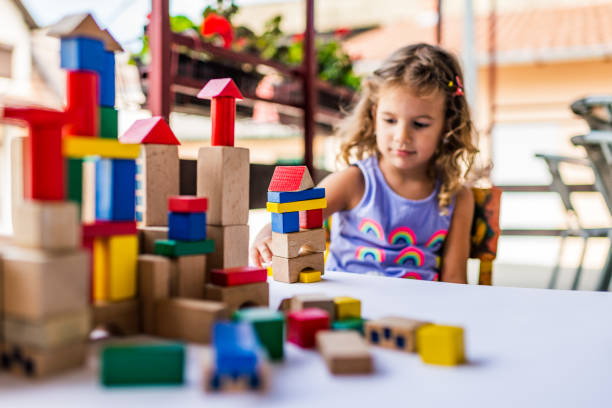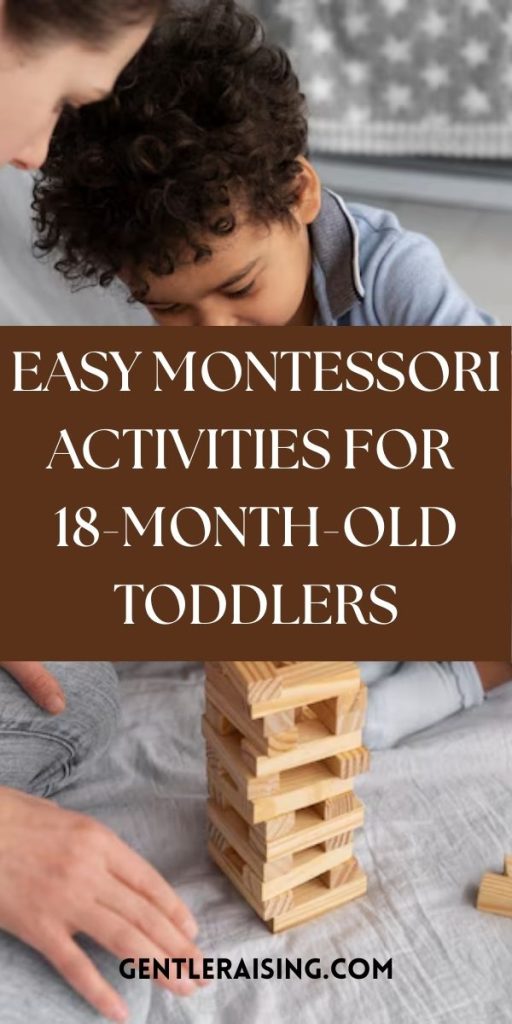What’s So Special About Montessori, Anyway?
You’ve seen the clean aesthetic, the wooden toys, the low shelves, the neutral tones. Maybe you’ve even caught a glimpse of a Montessori mom calmly sipping tea while her toddler slices a banana with a real knife. Sounds magical, right?
But Montessori is more than just a Pinterest-worthy vibe. It’s a philosophy built on respect for the child, for development, and for the slow unfolding of independence. And the best part? You don’t need a classroom or a certificate to bring this magic into your living room.
The Heart of Montessori. It’s Not Just Wooden Toys
Let’s clear something up. Montessori isn’t about expensive materials or trendy aesthetics. It’s about creating an environment where your child can do things for themselves, even if it means a few spilt beans or socks on backwards.
At its core, Montessori is about trust. Trust that your toddler is capable, curious, and driven by an inner need to learn by doing. We’re not here to entertain them 24/7; we’re here to guide them as they explore the real world, one spoonful at a time.
When Can You Start? (Spoiler: Earlier Than You Think)
Montessori isn’t a “start at age 3” kind of deal. You can begin as early as infancy, adjusting, of course, to what’s developmentally appropriate. Toddlers (ages 1–3) are in the prime stage of the Sensitive Periods, windows of time when their brains are wired to absorb language, movement, and order like a sponge.
So yes, your 18-month-old can help set the table. Your 2-year-old can wash their own hands. The key is inviting them in, not keeping them out.
The Golden Rule: Follow the Child
This phrase gets tossed around a lot, but what does it mean?
It means noticing what lights your child up and building from there. If your toddler keeps going back to pouring water, let them pour. Again and again. (Yes, it’ll get messy. That’s okay.) If they’re obsessed with opening and closing boxes, set out a tray of lids and containers.
Montessori isn’t a checklist. It’s an invitation to observe, support, and trust.
Montessori at Home: No Fancy Setup Needed
You don’t need a “Montessori playroom.” You need access, consistency, and patience. Here’s what that might look like:
- A stool at the sink so they can wash their hands
- A low shelf with a few open-ended toys
- A child-sized broom to help sweep up cracker crumbs
- Time uninterrupted, unhurried, and unscheduled
The goal? To help your child feel like they belong not just in play, but in the rhythm of family life.
25 Montessori Activities (That Don’t Require a Degree or a Budget)
Let’s get into the good stuff. These activities are age-appropriate, rooted in Montessori principles, and most importantly, enjoyable for toddlers and parents alike.
1–5: Practical Life Skills (Yes, They Enjoy These)
These are the everyday tasks adults often rush through, but toddlers live for them.
- Pouring Water – Use a small pitcher and a glass. Start with colored water for fun.
- Washing Fruits & Veggies – Give them a scrub brush and a colander in the sink.
- Transferring with a Spoon – Dry beans, two bowls, and a little patience.
- Peeling a Banana – Show them how to start, then let them take over.
- Wiping Spills – Hand them a small cloth and say, “You can clean that.”
Why it matters: It builds coordination, confidence, and real-life competence.
6–10: Sensorial Play (No Flashy Lights Needed)
These activities invite toddlers to explore the world with their senses,s the real ones.
- Sound Matching – Fill small containers with rice, beans, or beads let them listen.
- Texture Walk – Carpet, tile, bubble wrap, grass, barefoot is best.
- Mystery Bag – Place familiar items inside and let them guess by touch.
- Smelling Jars – Cotton balls dipped in vanilla, lemon, cinnamon, etc.
- Colour Sorting – Use buttons, pom-poms, or nature items (like flowers or leaves).
Sensory doesn’t mean chaotic. In Montessori, it’s thoughtful, intentional, and calm.
11–15: Language & Communication (No ABC Flashcards Needed)
Language learning in Montessori is organic; it comes from conversation, not drills.
- Naming Objects – During a walk or snack, name everything naturally.
- Two-Word Phrases – “More banana,” “Big truck,” “Wet towel.” Keep it simple.
- Reading Real Books – Board books with real photos are gold.
- Object to Picture Matching – Match a toy banana to a photo of one.
- Conversation Time – Sit face-to-face and talk, slowly and warmly.
What matters most? Connection. That’s where language blooms.
16–20: Fine Motor Fun (Building Those Little Hand Muscles)
Not just handwriting, fine motor skills support dressing, eating, and independence.
- Threading Large Beads – Use shoelaces or pipe cleaners.
- Sticker Play – Peeling and placing is surprisingly satisfying.
- Opening & Closing Jars – Set out a few safe containers.
- Clipping with Clothespins – Try on a bowl or cardboard edge.
- Transferring with Tongs – Use mini tongs and cotton balls.
Their little hands are working hard. Give them tools that fit.
21–25: Gross Motor Movement (Because Sitting Still Isn’t Natural)
Montessori embraces movement; it’s how toddlers learn best.
- Sweeping with a Child-Size Broom – Bonus: it actually helps you!
- Rolling a Mat – It’s harder than it looks and so satisfying.
- Climbing on Cushions – Create a safe indoor obstacle course.
- Carrying a Tray – Start empty, then add small objects.
- Walking the Line – Use tape on the floor and walk slowly (like a balance beam).
The freedom to move = the freedom to learn.
Keeping It Real: Your Home Isn’t a Classroom
Let’s be honest: your toddler might lick the sponge more than they wipe with it. That’s okay.
Montessori at home isn’t about perfection. It’s about possibility. You’re not running a school,l you’re running a family. And that means things will get messy, loud, and unpredictable.
But that doesn’t mean you’re “doing it wrong.” It means you’re living it.
How to Avoid the Pinterest Trap
You don’t need all the trays, wooden bowls, and neutral linens to be “Montessori.”
You need presence.
It’s easy to get caught in the aesthetics, cs especially with Instagram-worthy setups. But if your toddler would rather stir pancake batter than thread beads, go with the pancakes.
Follow their joy. That’s where the real learning happens.
Quick Tips for Success (and Staying Sane)
- Rotate materials every week or so; too many options overwhelm.
- The model doesn’t explain everything, just shows.
- Accept messes as part of learning.
- Step back and observe before jumping in to “help.”
- Invite, don’t force if they say no, try again another day.
You’re not training a robot. You’re raising a human.
Final Thoughts – It’s About Connection, Not Perfection
Montessori isn’t a rulebook; it’s a rhythm. It’s a way of seeing your child not as someone to fix, mould, or entertain but as someone to know.
You’ll mess up. You’ll get frustrated. But in between, you’ll catch a glimpse of something magical: your child’s pure joy at being capable. That’s the gift of Montessori.
So, grab the tiny broom. Pour the water (again). Watch their eyes light up when they succeed.
Because you know what? That’s the kind of learning that sticks.

